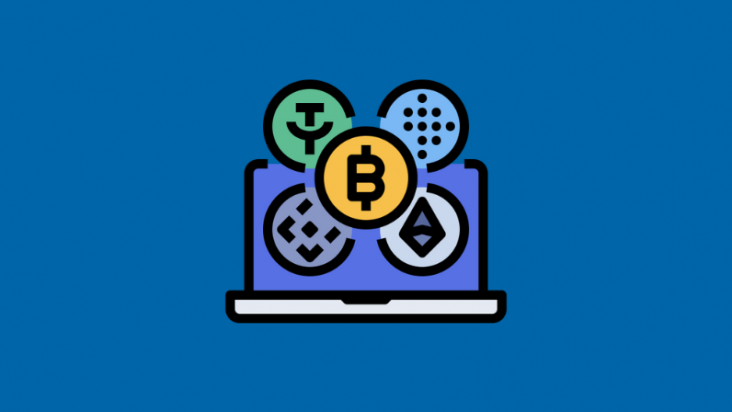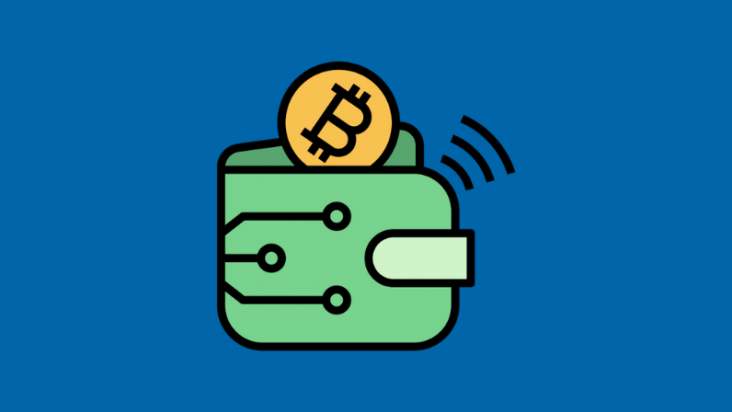

The Play-to-Earn (P2E) gaming model has taken the digital world by storm, merging blockchain technology, gaming, and real-world rewards into a unified experience. As we move towards 2025, the P2E market is poised for transformative growth, spurred by technological advancements, increased mainstream acceptance, and new user-centric innovations.
The Evolution of Play-to-Earn: A Brief Recap
Play-to-Earn games emerged as a disruptive innovation within the blockchain gaming ecosystem, enabling players to earn cryptocurrency, non-fungible tokens (NFTs), and other tangible rewards by participating in gameplay. This model revolutionized traditional gaming economics, where players often invested time and money without the opportunity for financial returns.
Initially dominated by pioneers like Axie Infinity and Decentraland, the P2E market has matured significantly. Early challenges such as unsustainable economic models and high entry costs are now giving way to more robust, scalable, and equitable systems. In 2024, Play-to-Earn games continued to gain traction, driven by improved gameplay, growing community ecosystems, and the adoption of technologies like Augmented Reality (AR) and Virtual Reality (VR).
As we enter 2025, this evolution shows no signs of slowing, with forecasts suggesting unprecedented growth and new opportunities for players, developers, and investors alike.
Market Trends Shaping Play-to-Earn in 2025
Integration of AI and Emerging Technologies
Artificial Intelligence (AI) and immersive technologies like AR and VR are set to redefine the P2E experience. AI will enhance user experiences by personalizing gameplay, automating rewards distribution, and improving in-game economies. VR and AR will create hyper-realistic gaming environments, blending physical and virtual worlds seamlessly.
For example, games involving virtual pet ownership will allow players to interact with their pets in AR, adding an emotional and tactile dimension to the gaming experience. AI-driven predictive analytics will further optimize gaming ecosystems by maintaining balance and sustainability in tokenomics.
Mobile-First Adoption
Mobile platforms will dominate P2E gaming by 2025, with smartphones becoming the primary medium for gaming worldwide. High smartphone penetration rates, particularly in Asia-Pacific and emerging markets, will make P2E games accessible to a broader audience. Developers are increasingly focusing on mobile-optimized games that offer smooth, engaging, and low-cost entry points.
The accessibility of mobile gaming also aligns with microtransactions and low gas fees on Layer-2 blockchains, which are crucial for driving mass adoption. Projects leveraging blockchain networks like Polygon, Binance Smart Chain, and Solana are expected to thrive.
Sustainability of Game Economies
Economic sustainability is a critical factor for P2E games. Early versions of Play-to-Earn suffered from inflationary token economies, where the rewards distributed outweighed the revenue generated. By 2025, developers will adopt more sustainable models, emphasizing utility-driven tokens and diversified revenue streams.
Strategies include introducing in-game assets tied to real-world use cases, staking mechanisms, governance features, and partnerships with established brands. Dual-token models, where one token serves as a governance asset and another as an in-game currency, will become the industry standard to maintain value.
Rise of Community-Driven Platforms
Community involvement will drive success in P2E games. Platforms will prioritize decentralized governance models, enabling players to influence game updates, rewards systems, and long-term roadmaps. DAO (Decentralized Autonomous Organization) structures will empower player communities to shape the evolution of their favorite games.
Social integration will also enhance user engagement. By incorporating social media tools, multiplayer modes, and collaborative gameplay, P2E platforms will encourage community interaction, fostering loyalty and organic growth.
Regulation and Compliance
As the P2E market matures, regulatory frameworks will play a larger role in shaping its future. Governments and financial institutions will look to monitor blockchain-based assets, including NFTs and cryptocurrencies, to ensure compliance with financial laws and prevent exploitation.
While regulation presents challenges, it also provides an opportunity for legitimizing P2E games. Compliant platforms will attract institutional investors and larger gaming companies looking to tap into blockchain gaming.
Market Projections for Play-to-Earn in 2025
The Play-to-Earn market is expected to exhibit substantial growth over the next year, fueled by increasing adoption and technological advancements.
- Market Valuation: The global P2E gaming market, valued at approximately $2 billion in 2024, is projected to reach $3.5 billion by the end of 2025, representing a Compound Annual Growth Rate (CAGR) of over 26%.
- Geographic Expansion: Asia-Pacific will continue to dominate the market due to its large gaming population, rising smartphone usage, and openness to blockchain technology. Meanwhile, North America and Europe will witness steady growth, driven by higher consumer purchasing power and regulatory clarity.
- User Base: The P2E player base is expected to surpass 50 million active users by 2025, with significant contributions from mobile gamers and younger demographics familiar with digital assets.
- Revenue Streams: P2E platforms will diversify revenue models beyond in-game purchases, including subscription plans, token staking, licensing fees, and in-game advertising.
Leading blockchain networks like Ethereum, Binance Smart Chain, and emerging Layer-2 solutions will underpin this growth, enabling low transaction fees and faster processing times.
Challenges Ahead for the P2E Market
While the prospects for Play-to-Earn gaming in 2025 appear promising, the industry faces significant challenges that could impact its long-term growth and sustainability:
Economic Sustainability
Achieving a sustainable balance between rewarding players and ensuring profitability for developers remains a key challenge. Many P2E models, such as Axie Infinity during its peak in 2021, relied heavily on a steady influx of new players to fund rewards for existing users. This led to a “Ponzi-like” economic structure, where payouts were dependent on growth rather than organic, sustainable activity. As a result, when user growth plateaued, the value of Axie’s tokens (SLP and AXS) dropped by over 95%. To avoid similar collapses, developers now need to integrate sustainable revenue streams like in-game purchases, advertising, tiered subscription models, or branded collaborations. For instance, games like Splinterlands and Gods Unchained have successfully combined NFT sales and optional upgrades as revenue sources.
Regulatory Uncertainty
Regulatory challenges pose significant risks to P2E’s global adoption. For example, China has banned cryptocurrency transactions and mining activities, while South Korea has strict gaming regulations that limit P2E operations due to concerns over gambling and speculative behavior. Similarly, in the United States, the Securities and Exchange Commission (SEC) has raised concerns over whether gaming tokens and NFTs constitute securities, which would impose strict legal requirements on developers. Inconsistent regulations across regions can deter developers from scaling their games globally and complicate user adoption. Countries like Japan and the UAE, however, have shown growing openness to blockchain gaming, offering more stable regulatory environments for expansion.
- Technical Barriers: Blockchain infrastructure—on which P2E games rely—faces scalability and cost challenges. For instance, Ethereum’s high gas fees during periods of congestion made P2E gaming inaccessible for casual players. At its peak, transaction fees on Ethereum often exceeded $50, which is unsustainable for microtransactions common in gaming. Solutions like Polygon, Immutable X, and other Layer-2 scaling solutions have emerged to lower costs and improve transaction speeds, but adoption remains uneven. Additionally, games like The Sandbox and Decentraland, while groundbreaking, have faced criticism for their energy consumption, drawing attention to blockchain’s environmental impact. As eco-conscious players demand greener alternatives, networks like Solana and Cardano, known for their low energy consumption, may become more favorable for P2E development.
- User Retention: Retaining players is one of the biggest hurdles for P2E games. Many players join purely for monetary rewards, leading to shallow engagement. For example, Alien Worlds and Mobox experienced rapid user declines when token values fell, exposing their reliance on financial incentives rather than intrinsic gameplay quality. Successful games must shift focus toward player-first experiences, offering engaging content, high-quality graphics, and captivating narratives. Illuvium, for instance, combines AAA-quality visuals with RPG mechanics to attract long-term players, while Genopets integrates fitness and health tracking into gameplay to appeal to diverse audiences. Furthermore, organizing community-driven events, tournaments, and social engagement features—like Axie Infinity’s esports competitions—can foster loyalty and a sense of belonging among players.
- Intensifying Competition: The growing popularity of blockchain gaming has led to a saturated market, with thousands of P2E games launching annually. Standing out requires delivering unique and immersive experiences. For example, Star Atlas combines a space-exploration metaverse with cinematic visuals, differentiating itself from traditional P2E games. Meanwhile, Petaverse Network explores augmented reality (AR) integration, allowing users to interact with virtual pets in real-world environments—offering something beyond standard NFT-based models. To remain competitive, developers are also leveraging strategic partnerships. The Sandbox, for instance, has collaborated with major brands like Adidas, Snoop Dogg, and Atari, which not only increases visibility but also builds cultural credibility.
The Future of Play-to-Earn: Opportunities
The P2E industry is at the forefront of transforming how people interact with games, blockchain technology, and digital ownership. As we progress into 2025, several promising opportunities are set to reshape the market:
Cross-Platform Integration
One of the most significant trends will be the collaboration between P2E games and traditional gaming companies, bridging the gap between Web2 and Web3 ecosystems. Established gaming studios, such as Ubisoft and Square Enix, have already begun experimenting with blockchain technology, integrating NFT-based assets and decentralized ownership into their game ecosystems. For example, Ubisoft’s Quartz platform allowed players to purchase unique, tradable in-game items. As traditional studios enter the Web3 space, players will benefit from a seamless experience across both Web2 (traditional) games and Web3 P2E environments, encouraging mainstream adoption of blockchain gaming.
Brand Partnerships
Partnerships with global brands present a massive opportunity to enhance revenue streams and boost visibility for P2E games. Major brands are increasingly recognizing the potential of virtual worlds and metaverses for marketing and product placement. For example, The Sandbox partnered with Adidas, Gucci, and Warner Music Group to create branded experiences, attracting millions of fans to their platform. These collaborations not only open new monetization avenues—such as branded NFTs and exclusive in-game content—but also help onboard non-crypto users by providing recognizable and trusted entry points into the P2E ecosystem.
- Gamification of Real-World Tasks: P2E mechanics are no longer confined to gaming alone; they are beginning to influence sectors like education, fitness, and virtual workspaces. For instance, STEPN—a fitness-based app—gamifies physical activities like walking and running, rewarding users with tokens for staying active. Similarly, Genopets combines exercise with pet-raising gameplay to promote real-world health through virtual incentives. In education, platforms like Proof of Learn aim to incentivize skill development by rewarding users for completing online courses. This gamification of everyday tasks creates new opportunities for engagement while encouraging healthier, productive, or educational behavior.
- Innovative Tokenomics: The evolution of tokenomics will play a critical role in sustaining long-term player engagement and economic stability within P2E ecosystems. Utility tokens tied to tangible rewards, real-world applications, or governance rights can enhance value perception among players. For example, Gods Unchained enables players to earn tokens (GODS) that can be used for in-game purchases, staking, or crafting new assets, providing incentives beyond financial speculation. Moving forward, hybrid models that integrate on-chain rewards with real-world perks—such as exclusive event access, product discounts, or loyalty benefits—will ensure that tokens retain practical utility and relevance over time.
As P2E technology matures and expands, these opportunities will drive greater innovation, mainstream adoption, and economic sustainability across industries. By leveraging partnerships, bridging traditional and blockchain ecosystems, and applying gamification principles to new sectors, the P2E industry is well-positioned to reshape how people interact with digital and physical worlds alike.
Potential of Becoming a Cornerstone
The Play-to-Earn gaming market in 2025 is set to experience exponential growth, fueled by technological innovation, mobile adoption, and sustainable economic models. While challenges persist, the opportunities for developers, players, and investors are substantial. By addressing economic, regulatory, and technological barriers, P2E games have the potential to become a cornerstone of the gaming and blockchain industries.
As the line between the physical and virtual worlds continues to blur, Play-to-Earn will redefine the future of entertainment, offering gamers not just fun, but meaningful financial opportunities. The year 2025 will mark a pivotal chapter in this revolution, showcasing how innovation and community-driven ecosystems can transform gaming forever.








